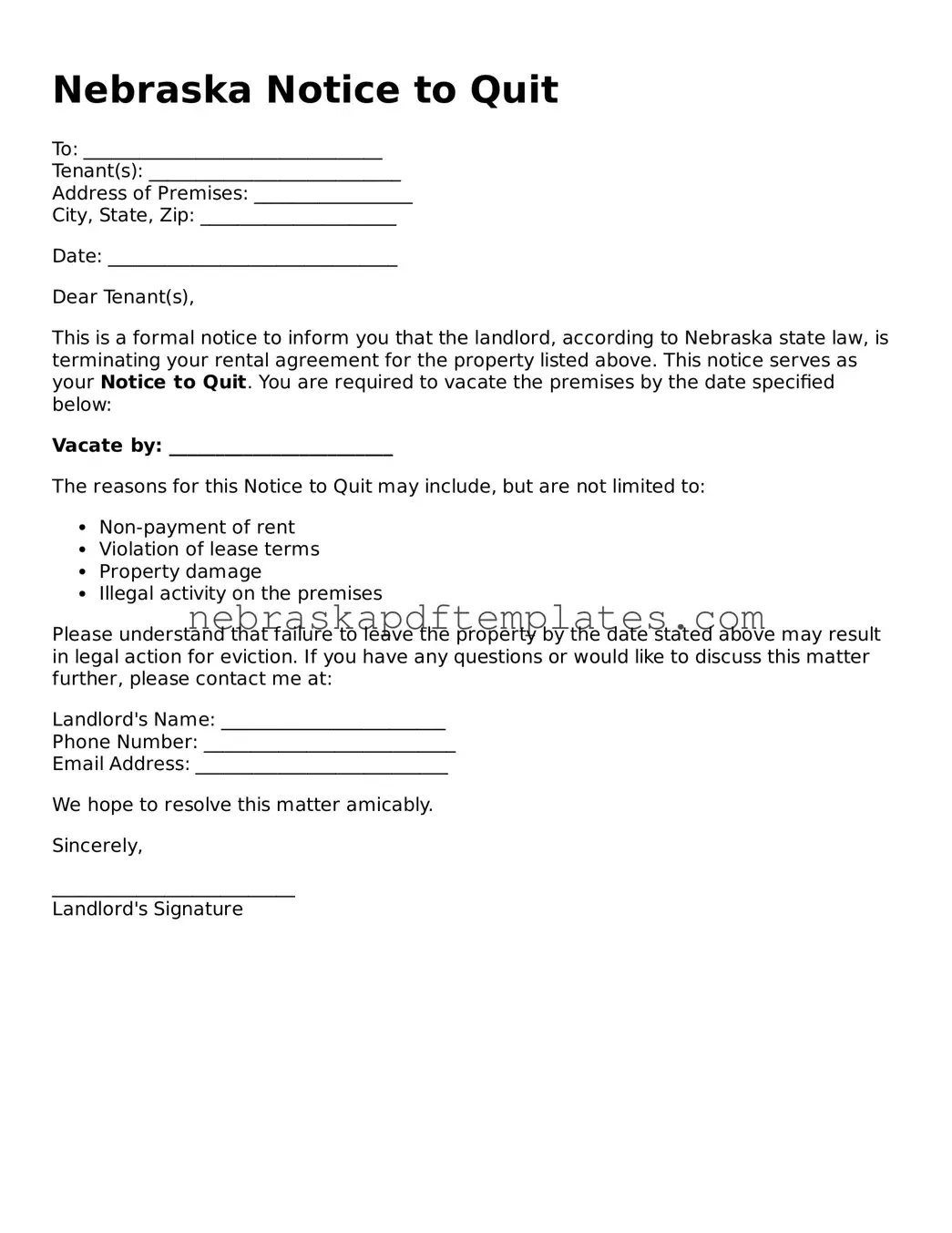Attorney-Verified Notice to Quit Document for Nebraska
The Nebraska Notice to Quit form is a legal document that a landlord uses to inform a tenant that they must vacate the rental property. This form is an essential step in the eviction process, providing tenants with a clear understanding of their obligations and timelines. If you need to fill out this form, click the button below.
Access Editor Here
